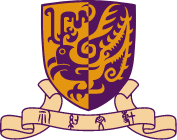E-Learning
Foundational Sciences for Undergraduate Courses
The Micro-modules in Mathematics for Introductory Undergraduate Physics page* provides a comprehensive set of resources designed to enhance your mathematical skills for physics courses.
- Target Audience: Ideal for pre-university and first-year students.
- Topics Covered: Units and dimensions, coordinate systems, elementary functions, integration techniques, differential equations, complex numbers, and more.
There is also a question bank* of simple mechanics problems for PHYS1110. Please note that this resource is password-protected. To obtain access, kindly email our general office (earth@cuhk.edu.hk) for the username and password.
*We acknowledge the Department of Physics at The Chinese University of Hong Kong for providing these valuable resources.
Prof. Amos Tai gives a review lecture on general chemistry that is relevant and useful for the study of the climate, atmospheric and environmental sciences.
Rocks & Minerals Gallery
Structure Models
Demonstrations of Weather-in-a-Tank Experiment
In the atmosphere, air at different latitudes have different temperature. When cold polar air and warm tropical air meet at mid-latitudes, the transition is not gradual, but often abruptly. In this experiment, we are going to study this sharp temperature gradient, known as the polar front.
In our atmosphere, there are general circulations which are mainly constrained by two factors – the rotation of the Earth, and the temperature difference at different latitudes. We are going to see how these factors contribute to the tropical circulation and generate trade winds.
After studying atmospheric circulation patterns at low-latitudes, we are going to see how the temperature gradient and the rotation of Earth contribute to the general circulation and the global heat regulation at mid-latitudes.
Ekman LayersWhen wind blows in the atmosphere, air near the surface rubs against the Earth’s surface. Friction then plays an important role in the balance of forces. As a result, there will be layers in between the lower air near the surface and the free atmosphere above. We are going to examine these boundary layers in rotating fluid, which is an analogue of layers in the atmosphere. These layers are known as the Ekman layers.
When wind blows across the ocean, it produces waves and currents. In larger scale, it is the ocean circulation. We are going to study how wind drives ocean circulation. You are going to see the Ekman layers in the ocean and learn about the Ekman transport.
According to the Taylor Proudman Theorem, fluid will move in two dimensions under the fast rotation of the earth. When an incompressible fluid is under geostrophic balance, change of velocity of the fluid with the change of height will be 0, which means the velocity of fluid in vertical direction will be constant. When there is an immovable obstacle, it holds the vertical velocity of the fluid to be 0. Fast rotating fluid cannot go through it. They can just pass around it at all Heights by passing around a column. This stationary column of fluid above the obstacle is called a Taylor Column.
Currents, gyres and eddies facilitate large-scale mixing of oceans. They also help regulate our climate, weather, and marine ecosystems. In this experiment, we are going to study ocean gyres, which are mainly formed due to two factors – the rotation of the Earth and prevailing winds.
Vortexes are common in our atmosphere. Hurricane, or typhoon, is one type of vortexes found in our atmosphere. A non-rotating frame is not rotating with respect to an observer who is at rest. A rotating frame is rotating with a constant angular velocity and the observer follows this rotation. We are all standing on a rotating frame, which is the Earth. Balance of different forces produces vortexes in a rotating frame.
Virtual Geological Field Trip (Hong Kong)
1.1 Introduction
1.2 Minerals in granite
1.3 Pegmatite
1.4 Weathering of granite
1.5 Cross-cutting rock units
1.6 Unloading joints
VR360 (Click here for full-screen mode)
Interactive Modules
Our planet has a history of 4.5 billion years. Let’s see how well you know about the history of the Earth.
Format: Quiz [Click Here]
Course(s): ESSC1000, ESSC2010



